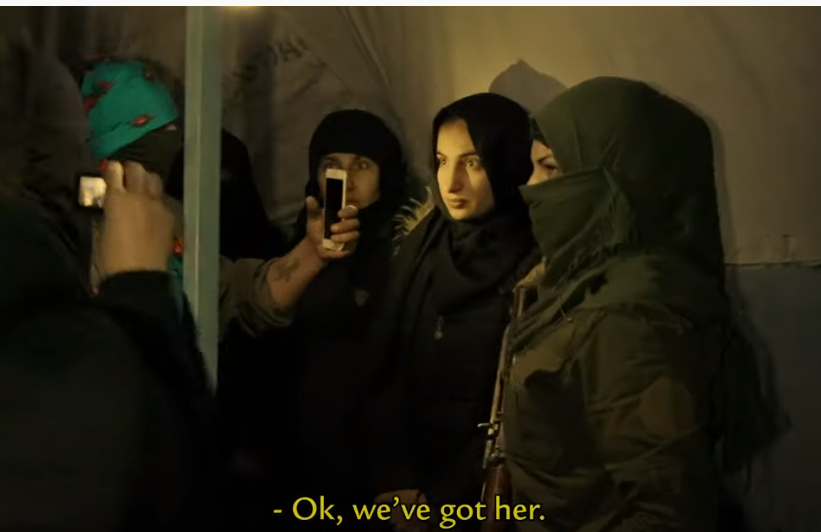Like many film journalists, not to mention jury members, who caught Hogir Hirori’s now discredited Sabaya at this year’s Sundance I was riveted, calling it (in the intro to my interview with Hirori) a “harrowing tale of heroism from a filmmaker all too familiar with the wartime struggles of those he documents.” Of course, thanks to the New York Times – and even more so to the dogged reporters at Sweden’s Kvartal – we now know that many of the key scenes in the Swedish-Kurdish director’s doc, which focuses on the ISIS sex slave-saving men and (anonymous) women of the Yazidi Home Center, were staged. Which as a non doc purist honestly bothers me less than the fact that Hirori, when confronted by an inquiring press, fictionalized his own account of obtaining said footage. And even more troubling, seems not to have obtained true consent from all his characters – and likewise not come clean about that terrible breach of trust either.
Yet as a film critic with zero background in investigative journalism, I also personally don’t feel I “should have known better.” With limited budget and bandwidth I’m forced to rely on institutions like the Sundance Film Festival, and government organizations such as the Swedish Film Institute, to do their due diligence for me.
(And even if it were possible, it’s simply not my job to vet every director I interview.)
Which is why, admittedly, I was pretty skeptical of the initial accusations against Hirori – and even wrote an essay chalking it up to a “he said/she said” saga. Naïvely, I just assumed that since the Swedish Film Institute had chosen so swiftly to stand by their veteran award-winning director and his accolade-laden film despite the brewing controversy, they likely were privy to more inside information than either I or the New York Times (ironically itself an institution not unfamiliar with dubious stories – as the recent Rukmini Callimachi “Caliphate” podcast debacle showed) on this side of the pond could possibly know.
I still can’t find it in myself to place the bulk of blame on the fabricating director
Unfortunately, I was wrong. Nevertheless, I still can’t find it in myself to place the bulk of blame on the fabricating director; Instead I fault the institutions that unquestioningly allowed Hirori to take advantage of their imprimatur. Starting with the aforementioned Swedish Film Institute, the primary funders of Sabaya. And exhibit A for what happens when Western liberal do-gooders fall prey to believing/supporting the narratives they themselves wish to see.
In this case, it was the (mostly white male) Swedish financiers gung ho to present a story that can basically be boiled down to the logline: “two heroic men and their nameless female sidekicks rush to the rescue of sexually enslaved women.” (Also known as the white male savior trope.) And finding cover/an avatar in a director who was himself a refugee to their country – and thus knew that both the project and his own sympathetic backstory would be catnip to the powers that be.
A disturbing dynamic that can’t help but serve as a recipe for disaster.
In other words, a disturbing dynamic that can’t help but serve as a recipe for disaster.
So how to remedy this insidious feedback loop? That’s the critical question that really needs to be front of mind going forward. Obviously, more gatekeeping diversity (in all its forms) is a stubbornly elusive necessity. Were the Swedish Film Institute made up of a great proportion of, say, non-white women, I venture to guess this whole mess could have been avoided. Likewise had the Sundance Film Festival programming team included, or at least contracted with, a film psychotherapist (yes, like “intimacy coordinators” that’s a job now) to flag possibly problematic selections before finalizing the program, Sabaya undoubtedly would have been more thoroughly scrutinized before it ever hit screens. Long before a talented fabulist could go on to nab a Best Director prize at any prestigious fest.

